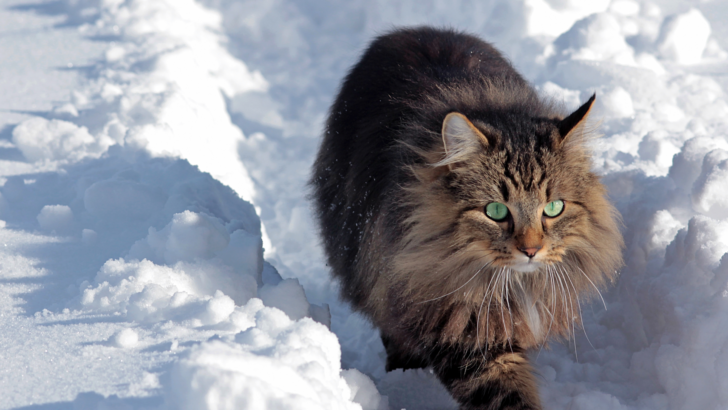The majestic Norwegian Forest cat is a sight for sore eyes. You saw how absolutely mesmerizing these cats look, and you’re thinking about bringing one home. However, you don’t really know much about them, do you?
I mean, that’s completely okay considering that it’s quite an unusual cat breed. That’s exactly why I’ve made sure to include all the needed information about this breed in this article.
When you’re done with reading, you’ll be able to consider yourself an expert on everything regarding the Norwegian Forest cats!
What’s a Norwegian Forest cat?
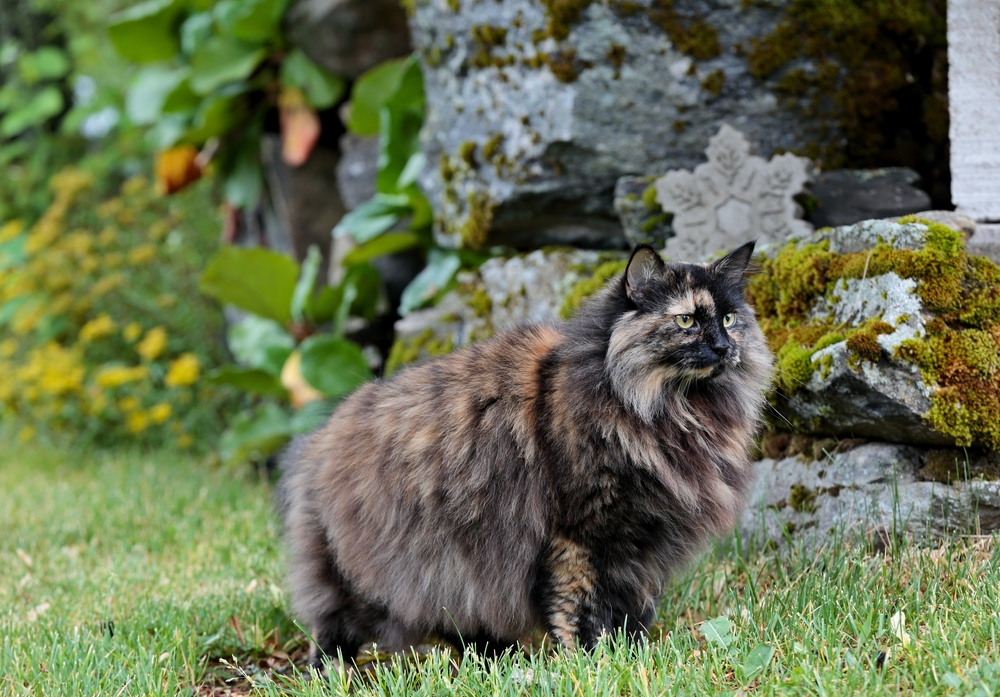
A Norwegian Forest cat is also referred to as Wegie (pronounced wee-gee), but the word that’s used in Norway for this breed is skogkatt which means forest cat. They’re the country’s official feline, and they have a very rich history.
These cats date back to Vikings. Vikings kept them on the ships to take care of the rodents. However, some even believed that these cats bring luck.
Norse oral stories tell tales about huge cats that could climb perfectly. Some stories even say that the Norse goddess Freya was driven by a chariot that was pulled by these cats.
Some legends even say that they’re “mountain-dwelling fairy cats with an ability to climb sheer rock faces that other cats could not manage.”
Today, Norwegian Forest cats are large, muscular, fluffy, and friendly felines that can weigh up to 20 pounds.
Appearance of the Norwegian Forest cat
1. Length and weight
I just made a comment about how Wegies can grow up to weigh up to 20 pounds. This information is mostly valid for big males of this species. However, their weight is mostly between 12 and 18 pounds.
They can grow up to about 36 inches, from nose to tail.
They’re one of the biggest domestic cat breeds, together with the Maine Coons. This means that your Wegie will need much more space in the house than you thought at first.
2. Coat
You probably saw that the Norwegian Forest cat has a thick coat. They actually have two coats, underneath the long coat is an undercoat that’s there to keep them warm during the merciless Scandinavian winters.
The coat itself can be any color or pattern that cats usually can have, with or without the white markings along their fur.
Also, the most common coat pattern that Wegies can have is Tabby. However, you’ll find almost every coat pattern in this particular breed.
Read more:
Tortie Of Your Dreams: Tortoiseshell Norwegian Forest Cat
Black Norwegian Forest Cat: A Pet You’ll Want To Take Home
Far From A Black Sheep: Black Smoke Norwegian Forest Cat
Meet The Warrior Of The Woods: Gray Norwegian Forest Cat
Meet The Smurf Of The Cat World: Blue Norwegian Forest Cat
3. Eye color

One other thing that can be quite important when it comes to the looks of a cat is their eye color. In this particular case, Wegies can have eyes in every shade of green that you can imagine.
Also, their eyes can be green-gold, or copper, and they can also have blue eyes if they’re white cats.
4. Unique traits
One of the unique physical traits that Norwegian Forest cats have is the fact that they’re so fluffy, so their tail follows along. The tail is very long and bushy, which helps them in the harsh winter snow.
When you see your cat for the first time, you’ll see that she has a ruff on her chest, and a collar of fluff around her neck. There are also britches on the rear legs and heavy tufting between the toes.
All of these things provide her with warmth. Especially the tufting between her legs, because this keeps her feet from freezing when she’s walking on snow and ice.
However, I genuinely believe that your cat won’t have to fight these types of conditions.
Read more: Norwegian Forest Cat Vs. Siberian: Which One Is Purrfect For You?
Characteristics of a Norwegian Forest cat
Now that you know what to expect when it comes to her appearance, how about we move on and talk about the characteristics of your cute Norwegian Forest cat? You’ll be surprised just how perfect these cats are as a pet.
1. Friendly

These are some of the friendliest cats that you’ll ever come across. I can promise you that much!
They’re not very affectionate, especially if they don’t know you. However, once they get accustomed to you, you’ll see that they’ll become even more affectionate.
Also, if you get your cat while she’s just a kitten, she’ll become used to cuddling and affection, so it won’t be anything weird to her.
On the other hand, she’s quite a mellow creature. She isn’t aggressive at all unless you agitate her for long enough. Usually, she won’t react when children are trying to play with her, or even when small dogs are playing.
However, if she does get agitated, just know that she won’t hold back. But that won’t happen often, considering that animals respect her for her size. They may even be scared of her.
She’s very child-friendly and pet-friendly. She’ll never attack a child or animal just because she feels like it. Furthermore, she’s the type of cat that will only attack if she feels threatened.
2. Playful and energetic
Even though Norwegian Forest cats are quite mellow, they also need a lot of playtime. Otherwise, you’ll wake up in the middle of the night to a cat rampaging your living room.
Her energy levels are extremely high, so you have to spend a lot of time with her playing and exercising. You don’t want your cat to become obese and develop serious health issues.
A recommended amount would be to play with her at least two times a day. Especially before going to bed. You have to get the last bits of her energy out of her system so that she’ll sleep soundly throughout the night.
3. Intelligent and easily trainable
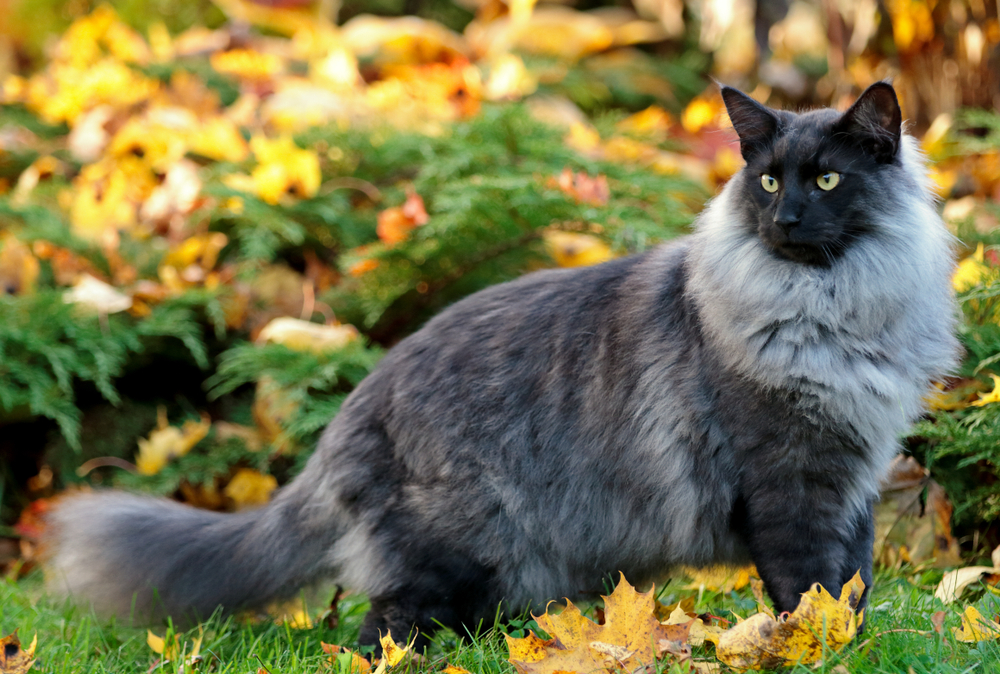
If you bring a lot of toys around, your Norwegian Forest cat will learn how to play with them in a matter of minutes. She’s highly intelligent and she definitely remembers certain things. For example, she’ll see the way you’re opening the door, so she’ll start jumping at the doorknob to open it.
Also, she’s easily trainable. You won’t have to lose your mind trying to teach her that it’s not okay to do her business outside the litter box. This also means that she’s able to understand the correlations between sounds and certain actions.
You probably saw that trainers usually use a clicker to get their cat to do certain tricks. Those tricks are usually followed by a treat. After a while, your cat will know that she has to do the trick when she hears the clicker.
I mean, this isn’t something you have to do. Your cat will be perfectly content just existing, but it’s a neat party trick.
4. Not very vocal
One thing that could make you happy is that a Norwegian Forest cat isn’t very vocal. This means that you’ll be able to sleep through the night without constantly listening to her meowing her little lungs out.
Sometimes, it’s quite sad to know that she doesn’t meow as much. You’re probably just like any other pet owner who adores listening to your cat meowing because you find her to be adorable.
There are ups and downs to this little trait, but I can promise you that she’ll still be the perfect pet for you.
Common health problems of Norwegian Forest cats
Norwegian Forest cats can have certain health issues, just like any other animal can. Mostly, the conditions that they have are hereditary, so there’s not much that you can do about that aspect.
This means that you should always research the person that you’re getting your cat from because certain genetic profiles shouldn’t be bred further.
There are three health problems that your Wegie can develop if she’s not taken care of.
1. Glycogen storage type IV (GSD IV)
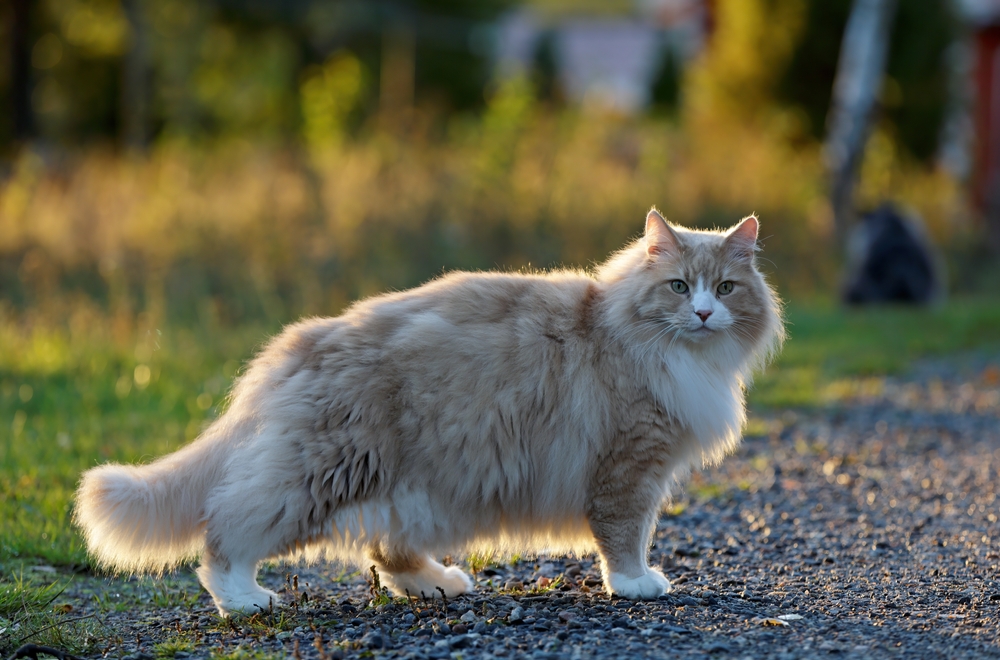
GSD is caused by a defective enzyme. It leads to dysfunctional organs and muscle atrophy, and it can, unfortunately, also be fatal.
If you see any irregularities in your cat’s behavior, then you need to take her to the veterinarian – illnesses like these have no mercy.
2. Hip dysplasia
When you look at a Norwegian Forest cat, the first thing that you notice is how big she actually is. Well, hip dysplasia is an illness that mostly affects larger cats like Wegies and Maine Coons, but it can also affect smaller cats.
It’s defined as the looseness of the hip joint, which you can easily spot. Your cat’s muscles will start to become weaker, she’ll start limping, and you may even see that she’s avoiding using her hind legs.
3. Hypertrophic cardiomyopathy (HCM)
This is the most common health problem that a Norwegian Forest cat can develop.
Hypertrophic cardiomyopathy or HCM is a condition that causes the walls of the cat’s heart to thicken. It can become fatal over time because certain blood clots will start forming, and the heart won’t be strong enough anymore.
So, what you should do is make sure that you’re always keeping an eye out for your cat. If you see labored breathing, a lack of appetite, or if you’re able to feel her heart pumping faster, you need to take her to the veterinarian.
If it’s diagnosed right away and if it’s treated properly with diet restrictions and medication, your cat may live a fulfilled and happy life.
How to groom a Norwegian Forest cat
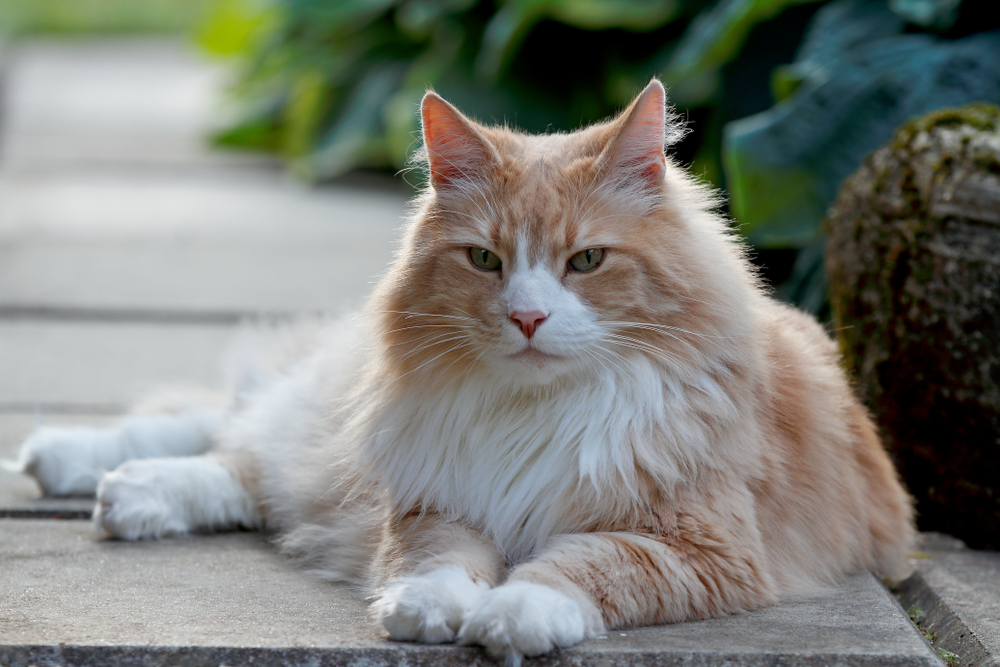
The dense fur on a Norwegian Forest cat has to be maintained properly. You shouldn’t think that your cat is able to groom herself properly or that she’ll simply never need your assistance. That’s a complete misconception.
The long coat, combined with the undercoat that she has to deal with, gets extremely tangled. She’ll want to play around, so her coat will become tangled and matted in a matter of minutes.
In this case, you’ll have to be patient and give all the time and energy to take good care of her.
Your first step will be to detangle anything that you’re able to with just your fingers. You shouldn’t go with your brush right away because it could bring her a lot of discomfort.
Afterward, I’d recommend that you use two different brushes for her coat. Use a softer brush for the outer coat, but use a metal brush for her undercoat. This is especially important during the warmer months of the year when she could suffer a heat stroke if you’re not diligent enough.
Other things that you should do when it comes to her grooming are just as important. For example, cats have a tendency to develop serious dental issues if you don’t take good care of them. You should also make sure that you’re clipping her claws and trimming around her ears carefully.
My recommendation would also be to opt for a sanitary trim every once in a while. I know that your cat can lick herself clean, but she doesn’t always do the best job. Especially with cats that have a coat that’s this long, you have to give them a hand.
It’ll be easier for both of you if you just take her to a groomer to give her a trim.
Read more: Are Norwegian Forest Cats Hypoallergenic? A Sneeze Fest Or?
Diet and nutrition
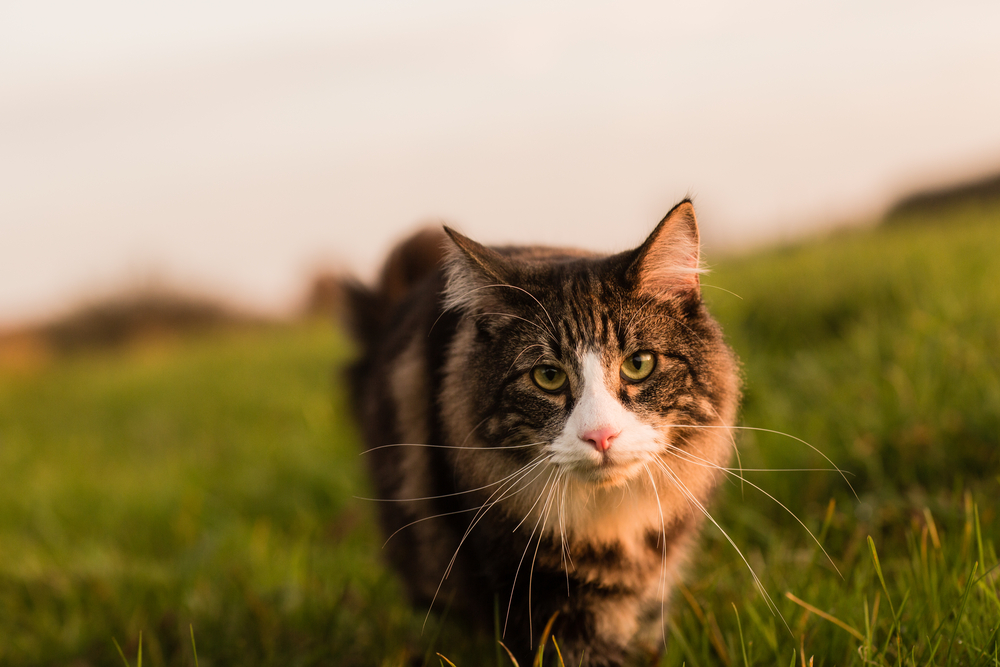
For a Norwegian Forest cat, it’s just as important to eat well as it is for any other cat. I know that she seems like a big feline and you may think that she’s chunky, but that’s actually her coat.
These cats have toned muscles and they’re sturdily built. If you want to make sure that your cat stays that way and doesn’t become obese, then you need to pay attention to her diet and nutrition.
If you choose to give her whatever you have on hand at that moment, your cat can suffer serious health problems. I mean, obesity is the main cause of feline diabetes and no one wants their cat to suffer this much.
A Norwegian Forest cat should eat measured amounts of food at least twice a day. I wouldn’t recommend that you leave food out for her throughout the entire day, because she’ll start overeating.
People will tell you that you can feed your cat freely because she’ll know when to stop, but that’s why free-fed cats are prone to snacking throughout the entire day. They don’t need to do that!
Also, know that cats are carnivores. There are so many vegans and vegetarians who refuse to feed their cats with meat because of their beliefs. Well, that’s not going to work. Your cat will make a visit to kittie heaven before you know it. Just give her some meat already!
Other than that, I would recommend that you go to your veterinarian or breeder to ask for the proper healthy foods that your Norwegian Forest cat can eat.
4 reasons why you may not want to adopt one
Now that we’ve talked about all the things you need to know about the Norwegian Forest cat, I thought that it would be a good idea to write down a couple of reasons why you shouldn’t get one.
It could help you decide whether this is the right choice for you.
1. She’s not a lap cat
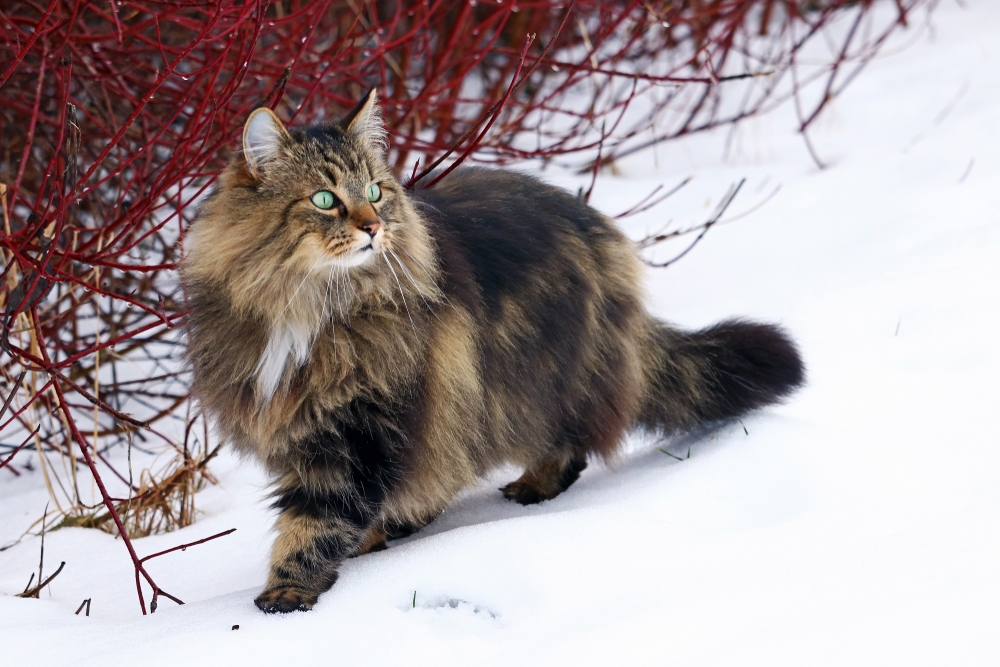
I mentioned this once before, but a Norwegian Forest cat isn’t very affectionate. You can’t put her in your lap and expect her to stay there. She’ll want to jump around.
She’s also not the type of cat who will snuggle up to you while you’re sleeping. Just remember the origin of this cat, she’s a hunter, not a cuddler.
If you’re looking for a cuddle buddy then you may want to look for a Siamese cat.
2. She’s high-maintenance
I can’t emphasize this enough. If you’re not the type of person who can give your cat a lot of time and energy, then this probably isn’t the right cat for you.
Her coat has to be brushed at least twice a week. And that rule stands only if your cat never leaves your home. If she does, then you’ll have to brush her almost every day.
Another thing that makes her high-maintenance is the fact that you have to play with her quite a lot. Exercise is important for a Norwegian Forest cat because her energy levels are very high.
3. You can’t leave her alone for long
A Norwegian Forest cat is quite a big cat, as you’ve noticed by now. If you leave her alone for a long period of time, she will find a way to entertain herself.
Once she becomes bored she’ll start jumping on every surface that she can reach. That’s when she’ll start throwing things around and she could seriously injure herself.
Never leave her alone for a longer period. You can go out for a date or clubbing, but if you’re going to be out of the house for a few days, find someone to take care of her.
4. She needs a lot of space

At this point, I feel like a broken record, but this is a giant ball of fur that you’re bringing into your home! You have to make sure that you have enough space for her.
Cats usually require a lot of space so that they can roam around freely. If you choose to ignore this, then you’re putting her at risk. She’ll start throwing things just to make more space for herself.
Everything you buy for your cat, from the carrier to the little bed that she’ll be napping in, everything has to be large so that your cat can comfortably fit in it.
If you don’t believe that you have the space for a fluffy giant, then maybe go get a smaller cat.
Read more: Ragdoll Vs. Norwegian Forest Cat: Battle Of The Furry Breeds
Where to adopt a Norwegian Forest cat
If everything that you’ve read up until this point was interesting to you, and you want to proceed with the adoption process, then the last step is to figure out where to adopt her.
You can try your local breeders. You can even ask local shelters or pet shops if they know someone who’s giving away kittens for adoption, or even if they’re selling them.
A Norwegian Forest cat is usually quite hard to find because she’s not your usual street tabby. So, you need to do some research before you can find a good breeder.
Also, I would recommend that you look at the genetic profile of the cats before you choose to bring one home. Kittens can inherit many different health issues that won’t be noticeable at the very beginning.
Both the Cat Fanciers Association and The International Cat Association often publish lists of breeders who deal with Norwegian Forest cats on their website, so you may want to check them out as well.
The price range varies depending on the availability and location that you’re getting your cat from, but don’t expect to pay below $600 for your furry friend. The prices can also be as high as $1200 for a purebred Norwegian Forest cat.
Read more: Norwegian Forest Cat Vs. Domestic Longhair: The Distinctions
Overview of the Norwegian Forest cat
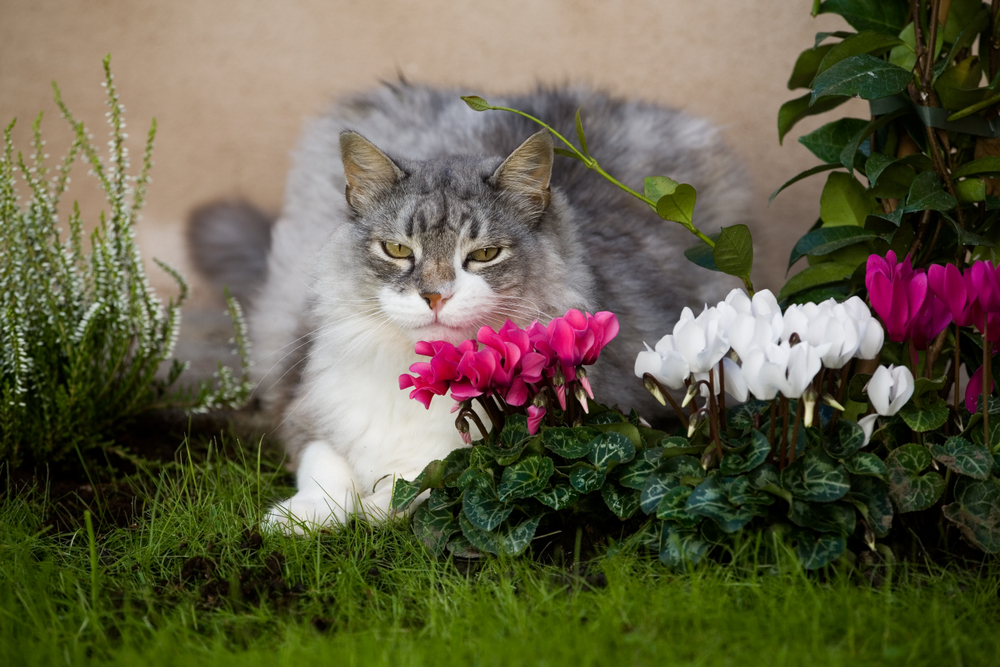
Considering that a healthy Norwegian Forest cat can live up to 18 years in a loving home, you really have to be aware of the decision you’re making. You can’t just go out and bring her home without understanding the responsibility that comes with her.
However, if you’re able to give her a happy and caring home, then this is the perfect cat for you. She’ll be gentle with your children, she’ll play around with your dogs, and she’ll never ruin stuff around your house for no reason.
These big cats are genuinely so gentle. Because of her size, other animals will respect her and they’ll always be put in their place if they overstep a boundary with her.
She’s genuinely the perfect pet for someone who’s never had a cat before. The only thing that you should be aware of is the fact that grooming isn’t just a one-time thing for these creatures. You’ll have to be aware of the responsibility that will fall on you.
Other than that, you’ll be the happiest cat owner in this world. You’ll never feel she’s a burden, you’ll only have unconditional love for your furry giant.
Read more:
